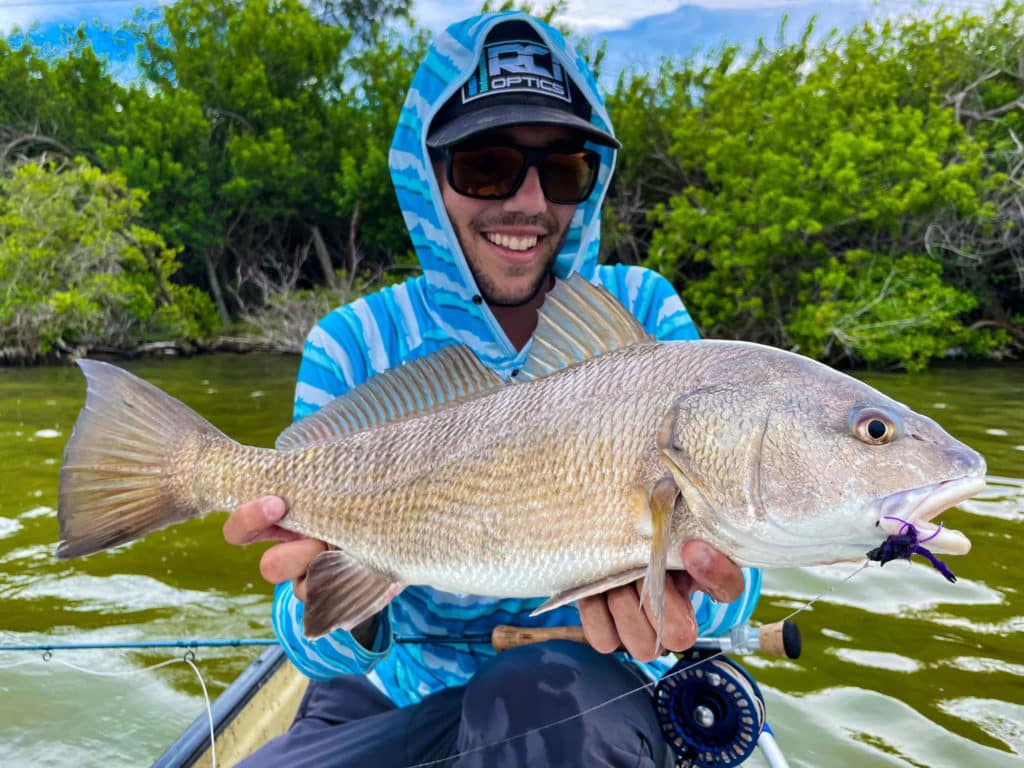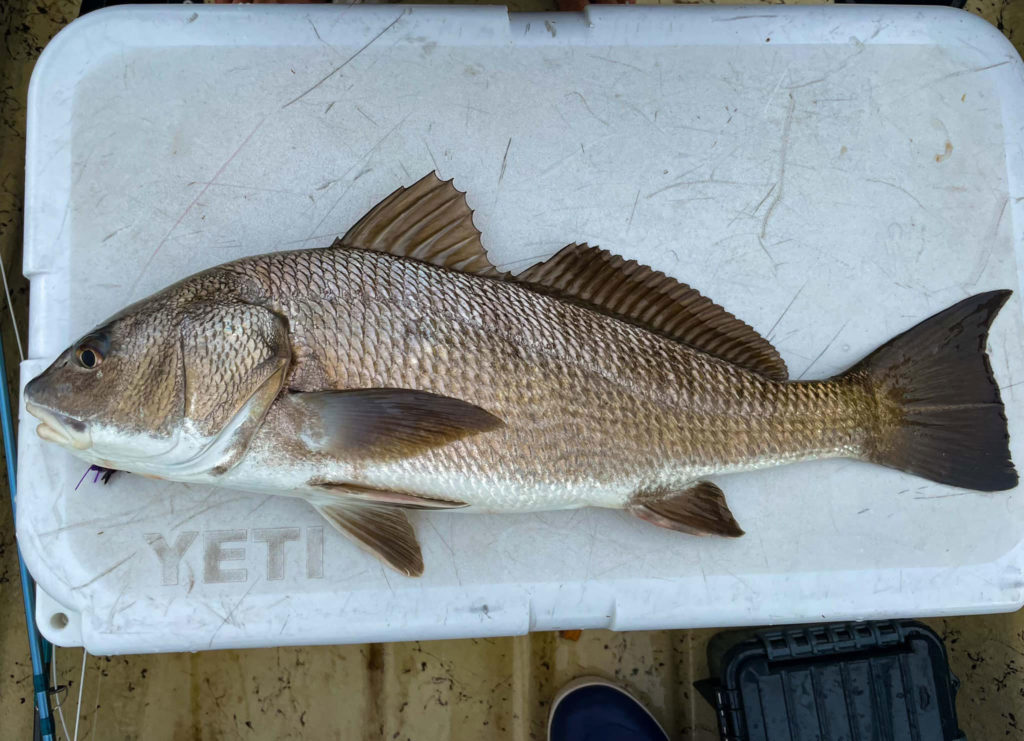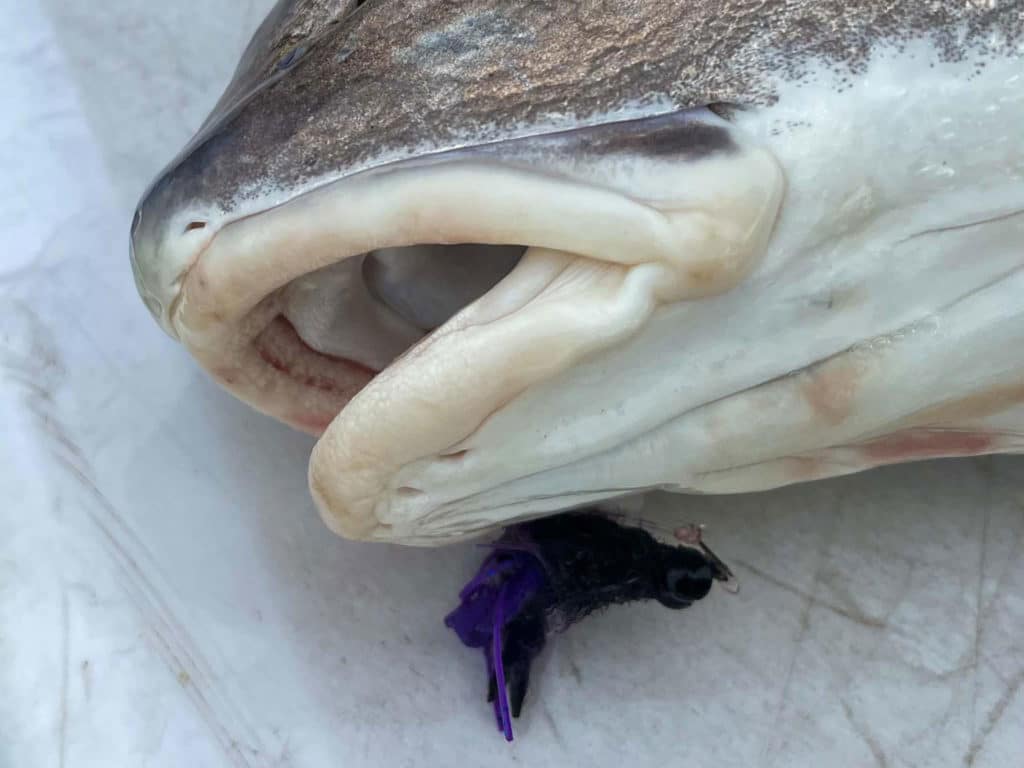
Captain Billy Rotne, of Ponce Inlet Charters, positioned his friend within range of a school of black drum and redfish mixed together in Florida’s Indian River Lagoon. In front of the canoe, angler Kieran Hoffman was ready with his 6-weight fly rod and a black-and-purple Caloosa Flat’s Crab fly.
The pair had fished together many times before, and caught plenty of drum on their adventures. But this trip was different.
Hoffman fought and tired another drum successfully, bringing it close to the canoe for release. The fish fought like a typical redfish, said Hoffman. But when the two anglers got eyes on the catch, they were thrown off. They instantly knew this fish was different.
“It had the pectoral fins of a black drum, a wider body profile than a redfish, and yet a slimmer profile than a black drum,” said Rotne. “The teeth, scales, tail and slime were those of a redfish. It had a bronze-like color that was darker than a redfish, but lighter than a black drum. There were no barbels or markings of any kind, including stripes or spots.”
The two anglers suspected Hoffman had landed a redfish-black drum hybrid. Although redfish and black drum are both in the Sciaenidae family, they spawn in distinctive areas and at different times of the year. To see a hybrid of the two species in the wild is very rare.

“The likelihood of hybridity in wild populations is low given the temporal and spatial differences with spawning in these species,” says Sarah Walters Burnsed, a marine fisheries biologist with the Florida Fish and Wildlife Research Institute. “Reds are fall spawners in nearshore waters while black drum spawn in spring, closer to shore and within the estuaries.”
But black drum and redfish can reproduce together. Both produce distinct sounds associated with reproduction, vibrating specialized sonic muscles against their swim bladders, says Burnsed. Aquaculture studies found that crossing female black drum with male red drum produced offspring that grew faster than their parents and still tasted about the same.
“The lagoon is something of a special case,” says Michael D. Tringali, a senior research scientist with the Florida Fish and Wildlife Research Institute. “Fish life histories and behaviors often differ in that system. Whereas red drum typically spawn in nearshore waters elsewhere, they may spawn inside the lagoon. This would conceivably remove the spatial constraint to cross-species fertilization. The catch is tantalizing. The hints of vertical striping are hard to explain.”

External indicators such as ray counts and clear morphometric differences can help identify fish species, but the best option is to conduct a diagnostic test on a fin clip, says Burnsed. A genetic test of this nature would have given a definitive answer. Rotne and Hoffman took a couple photos of the fish and released it back into the lagoon without getting a fin clip.
Still, Rotne, who has caught thousands of redfish and black drum in the Indian River lagoon, is confident in Hoffman’s catch.
“That’s the only hybrid I’ve seen in my 25 years fishing the lagoon,” said Rotne. “I have not seen or heard of an angler ever catching a fish like this. It could be the first true wild hybrid ever caught.”
Editor’s Note: Got an interesting catch? We’d love to hear about it! Drop us a line with all the details at catches@saltwatersportsman.com.









